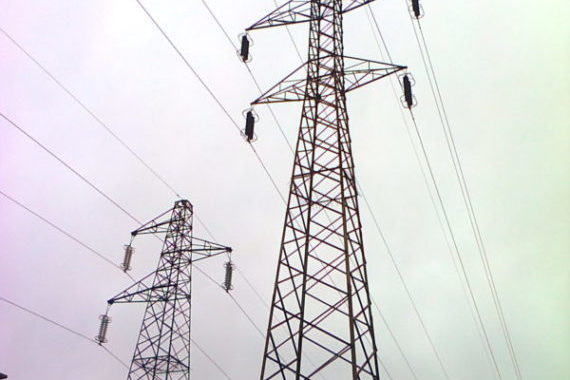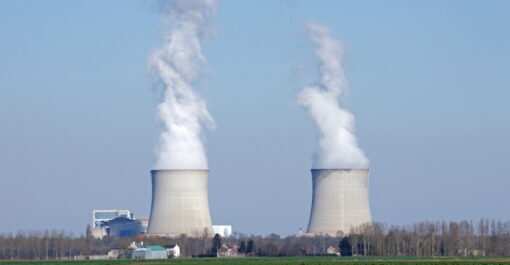Sulla base dei dati forniti da Terna, società che gestisce la rete elettrica di trasmissione nazionale, a settembre la domanda di elettricità in Italia è stata pari a 26,2 miliardi di kWh, con una crescita dello 0,5% rispetto allo stesso mese del 2022. Tale valore è stato raggiunto con un giorno lavorativo in meno (21 vs 22) e una temperatura media mensile superiore rispetto a settembre 2022 (+1,2°C). Rettificando il dato da tali effetti, la variazione rispetto a settembre 2022 è pari a +0,2%. La variazione tendenziale positiva rispetto a settembre 2022 dipende anche dal fatto che, a partire da agosto 2022, è iniziata una fase di significativa riduzione dei consumi elettrici come conseguenza delle forti tensioni sul mercato del gas.
VARIAZIONE NEGATIVA DEI CONSUMI INDUSTRIALI
Rispetto allo stesso periodo dello scorso anno, l’indice IMCEI elaborato da Terna, che prende in esame i consumi industriali di circa mille imprese energivore, registra una variazione negativa pari a -0,9%. Tale variazione è il risultato di andamenti diversi delle imprese connesse alla rete elettrica nazionale in Alta Tensione (AT) e Media Tensione (MT): a fronte di un aumento di quelle in AT (+0,6%), si registra un calo delle imprese connesse in MT (-8,6%). Variazioni positive si registrano nei seguenti comparti: mezzi di trasporto, siderurgia e alimentari; in calo, invece, i restanti comparti: metalli non ferrosi, cemento calce e gesso, cartaria, ceramiche e vetrarie, chimica e meccanica.
RICHIESTA IN TERMINI CONGIUNTURALI E DESTAGIONALIZZATA
In termini congiunturali, il valore della richiesta elettrica, destagionalizzato e corretto dagli effetti di calendario e temperatura, risulta in leggera flessione (-0,5%) rispetto ad agosto 2023. In crescita la variazione congiunturale dell’indice IMCEI (+3,2%). Nei primi nove mesi del 2023, la richiesta cumulata di energia elettrica in Italia è in calo del 4% rispetto allo stesso periodo del 2022 (-3% il dato rettificato). Variazione negativa anche dell’Indice IMCEI, che da gennaio a settembre fa registrare un -4,8 per cento. A livello territoriale, la variazione tendenziale di settembre 2023 è risultata ovunque positiva, ma differenziata: +0,1% al Nord, +1,4% al Centro e +0,9% al Sud e nelle Isole.
SETTEMBRE: VARIAZIONE TENDENZIALE
Nel mese di settembre 2023 la domanda di energia elettrica italiana è stata soddisfatta per l’86% con la produzione nazionale e, per la quota restante (14%), dal saldo dell’energia scambiata con l’estero. La produzione nazionale netta è risultata pari a 22,7 miliardi di kWh, stazionaria rispetto a settembre 2022. Lo scorso mese le fonti rinnovabili hanno prodotto complessivamente 10,1 miliardi di kWh, coprendo il 38,4% della domanda elettrica (30,7% a settembre 2022). La produzione da rinnovabili a settembre è stata così suddivisa: 35,9% idrico, 29,8% fotovoltaico, 16,4% eolico, 13,5% biomasse, 4,4% geotermico. Anche a settembre si conferma la forte contrazione della produzione termica (-12,6% rispetto allo stesso mese del 2022); sui primi nove mesi dell’anno tale variazione sale a -16,2% per l’effetto combinato di contrazione della domanda, crescita della generazione rinnovabile e dell’import. In tale contesto, rilevante il calo della produzione a carbone: -50,9% rispetto a settembre 2022, -29,8% da inizio 2023.
FONTI RINNOVABILI
Secondo le rilevazioni Terna illustrate nel report mensile, considerando tutte le fonti rinnovabili, nei primi nove mesi del 2023 l’incremento di capacità in Italia è pari a 3.911 MW, un valore superiore di circa 1.900 MW (+95%) rispetto allo stesso periodo del 2022. Estendendo l’analisi agli ultimi 12 mesi (da ottobre 2022 a settembre 2023) l’incremento di capacità installata è pari a 4.936 MW. Proseguono il recupero della produzione da fonte idrica rinnovabile (+74,7%) e la crescita del fotovoltaico (+24,7%). In aumento anche la produzione da fonte geotermica (+1,1%). In flessione la produzione da fonte termica (-12,6%) e l’eolica (-4,4%). Per quanto riguarda il saldo import-export, la variazione è pari a +1,4% per effetto di una diminuzione dell’export (-14,2%) e di una sostanziale stazionarietà dell’import (+0,3%).
DOMANDA DI ELETTRICITÀ
L’analisi dettagliata della domanda elettrica mensile provvisoria del 2022 e del 2023 è disponibile nella pubblicazione “Rapporto Mensile sul Sistema Elettrico”, consultabile alla voce “Sistema elettrico >> Dispacciamento >> Dati esercizio” del sito www.terna.it. I dati in tempo reale sull’esercizio del sistema elettrico nazionale sono inoltre consultabili sull’app di Terna disponibile sui principali store:
https://play.google.com/store/apps/details?id=it.terna.energia&hl=it
https://apps.apple.com/it/app/terna/id1458535498
I dati dell’Indice Mensile dei Consumi Elettrici Industriali sono consultabili sul sito: https://www.terna.it/it/sistema-elettrico/statistiche/imcei
***
Monthly demand at 26.2 billion kWh
TERNA: ELECTRICITY CONSUMPTION UP +0.5% IN SEPTEMBER
Renewable energy sources cover 38.4% of demand: growth in renewable hydroelectric production continues, +74.7% compared to September 2022
Rome, October 2023 – According to data from Terna, the national power grid operator, total Italian electricity demand in September stood at 26.2 billion kWh, up 0.5% on the same month in 2022. This figure was reached with one less working day (21 instead of 22) and a higher average monthly temperature compared to September 2022 (+1.2°C). Adjusting data for these effects, the increase on September 2022 is 0.2%. This upward trend is also attributable to the fact that August 2022 marked the start of a significant reduction in electricity consumption due to strong pressure in the gas market.
Terna’s IMCEI index, which examines the industrial consumption of around 1,000 energy-intensive companies, shows a decrease (-0.9%) compared to the same period last year. This is the result of the differing trends of companies with high voltage (HV) and medium voltage (MV) connection to the national grid. There was an increase for HV connections (+0.6%), whereas MV connections saw a decrease (-8.6%). Increases were seen in sectors like transport, engineering and food, whilst the others fell: non-ferrous metals, cement, lime & gypsum, paper, ceramics & glass, chemicals and mechanical engineering.
Short-term electricity demand data adjusted for seasonal, calendar and temperature effects was slightly down (-0.5%) on August 2023. The figure for the IMCEI index was up (+3.2%).
In the first nine months of 2023, cumulative electricity demand in Italy fell -4% compared to the same period in 2022 (adjusted figure -3%). There was also a drop in the IMCEI index: -4.8% from January to September.
Geographically, the year-over-year change in September 2023 trend was positive across the board: +0.1% in the North, +1.4% in Central Italy and +0.9% in the South and islands.
In September 2023, 86% of Italian electricity demand was covered by national production, while the remaining 14% was supplied through cross-border energy exchanges. Net national production amounted to 22.7 billion kWh, unchanged from September 2022. Last month, renewables sources generated a total of 10.1 billion kWh, covering 38.4% of electricity demand (30.7% in September 2022). Production from renewables in September was composed of 35.9% hydroelectric, 29.8% photovoltaic, 16.4% wind, 13.5% biomass and 4.4% geothermal. In September too, there was a significant decrease in thermal production (-12.6% compared to September 2022). Considering the first nine months of the year, this decrease rises to -16.2% due to the combined effects of a decrease in demand, growth in renewable generation and imports. In this context, there was a significant reduction in coal production: -50.9% compared to September 2022, and -29.8% from the start of 2023.
According to Terna’s monthly report, considering all renewables, in the first nine months of 2023, capacity in Italy rose 3,911 MW, approximately 1,900 MW more (+95%) than the same period in 2022. Extending analysis to include the last 12 months (from October 2022 to September 2023), the increase in installed capacity was 4,936 MW.
The recovery of renewable hydroelectric production continues (+74.7%), along with growth in photovoltaic generation (+24.7%). Geothermal production is also up (+1.1%), whilst there is a decrease in thermal production (-12.6%) and wind power (-4.4%).
Relative to the import/export balance, the change amounted to +1.4% due to the effect of decreased exports (-14.2%) and largely unaltered imports (+0.3%).
A detailed analysis of provisional 2022 and 2023 monthly electricity demand is available in the “Monthly Report on the Electricity System”, available under the section “Electric System>>Publications>>Monthly Report” at www.terna.it.
Real-time data on the operation of the national electricity system can also be found on the Terna app, available from all app stores:
https://play.google.com/store/apps/details?id=it.terna.energia&hl=it
https://apps.apple.com/it/app/terna/id1458535498
Monthly Industrial Electricity Consumption Index data is available on the website: https://www.terna.it/en/electric-system/statistical-data-forecast/imcei








